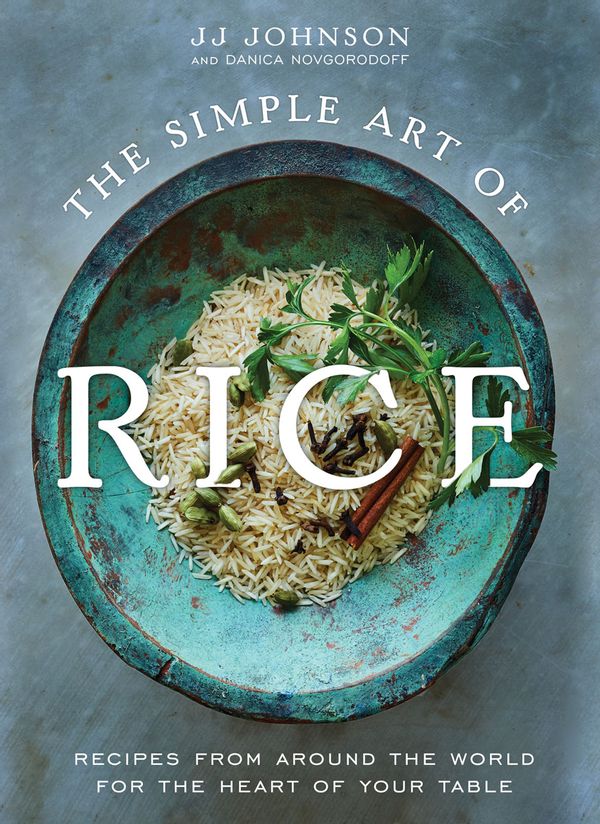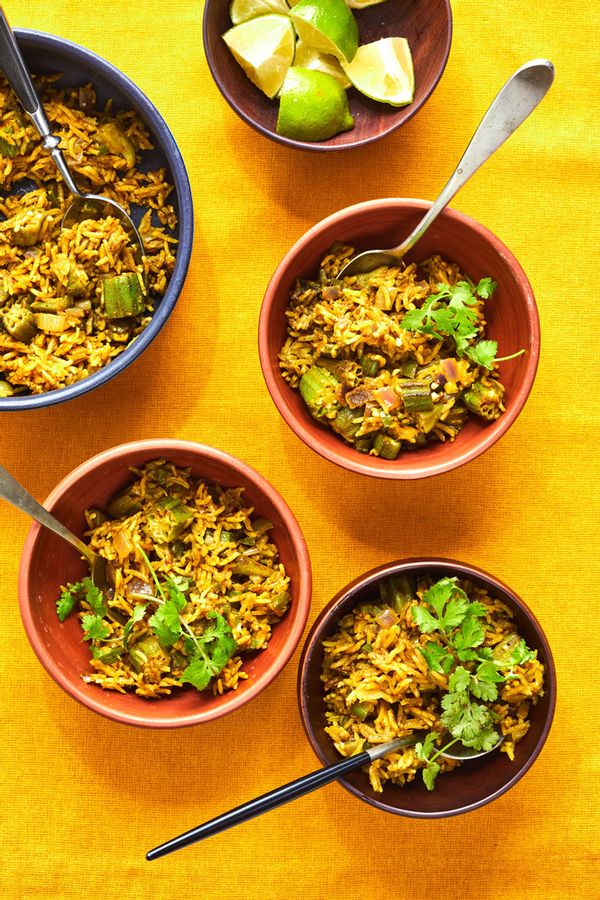Never mess up a pot of rice again
Rice is, arguably, the single most-important grain on the planet earth and one of the most significant crops throughout time and history. It also happens to be immensely reliable and terrific tasting, no matter the variety, how it’s cooked, if it’s served in a savory or sweet manner or what it’s served alongside. A bed of rice is welcome next to practically any dish, soaking up some of the sauce and providing a soft, familiar chew with each bite. It also has a deep, symbolic meaning in so many different cultures.
One issue with rice, however — is that it’s not always easy to cook! Take a look at endless examples of professional, tenured chefs with years of experience who’ve whiffed rice in a reality cooking competition in recent years (or maybe even that botched batch sitting in the garbage from your attempt at cooking rice the other night).
For such a reliable, ubiquitous ingredient, rice remains such a challenge for many — and one of the reasons that rice cookers sell so well. JJ Johnson, a full-blown rice enthusiast, recently wrote a book (in partnership with Danica Novgorodoff) all about rice called “The Simple Art of Rice,” which delves into its history, its prominence in so many different cultures, the best dishes to make with it and much, much more.
Salon Food recently spoke with Johnson to learn the answers to all of our questions about rice — and then some.
 The Simple Art of Rice (Photo courtesy of Beatriz da Costa)
The Simple Art of Rice (Photo courtesy of Beatriz da Costa)
You can purchase the book here!
The following interview has been lightly edited for clarity and length.
The book is stunning; I love the illustrations. Were they all drawn especially for the book? They’re so engaging, colorful and vibrant.
The illustrations were all drawn for the book. My co-author, Danica Novgorodoff, created them once all the text and recipes were complete to deepen the narratives about the culture and history of rice. She wanted them to add a little extra insight and character that neither the photos nor the text could provide, like a landscape of a rice plantation from the 19th century, prehistoric rice farmers along the Yangtze River or the steps for folding a potsticker.
You have a section dedicated to the history of rice. Could you give us an abridged version?
While it’s unknown exactly when and where rice was first cultivated, the Asian species of rice (Oryza sativa) was probably first domesticated from a wild grass between eight and ten thousand years ago somewhere in Southeast Asia (likely the Yangtze River basin in China). From there, Asian rice migrated westward with traders, explorers and armies, eventually reaching the Middle East and Europe.
However, a distinct species of African rice (Oryza glaberrima), was domesticated in present-day Mali over 3,000 years ago, long before Europeans ever arrived on the African continent. Therefore, it was likely African rice that was first introduced to the Americas during the Columbian Exchange beginning in the 16th century, as it was used to provide sustenance onboard ships during the long transatlantic journeys from the West Coast of Africa to the Americas. And it was undoubtedly West African farmers who brought their rice farming knowledge and expertise to the Americas during the slave trade and who made the success of the rice industry possible in the American South, the Caribbean and South America.
How exactly does rice harvesting work?
Rice may be harvested by enormous combines on an industrial-scale farm or by hand on a small village family plot. It’s quite labor intensive! Rice must be reaped (the mature plants cut), threshed and cleaned (separating the rice seeds from the rest of the plant), transported and dried. To process the rice, the grains are milled to remove the inedible hulls (leaving you with brown rice) and further polished to remove the bran and germ layers for white rice. Finally, winnowing is the process by which the hulls are separated from the rice. All of these steps can be done by hand or machine.
Jollof is a dish that is so immensely personal and diverse from country to country and home to home. Tell me about your recipe?
I won’t take sides in the jollof wars, but I am showcasing a Liberian version that’s somewhat reminiscent of a New Orleans jambalaya — soupy and full of seafood and meat, with a deep tomato flavor. A classic jollof consists of rice, a tomato base and spices, but this less-familiar iteration, which has a lot more to it, is a complete surf-and-turf meal rather than a side dish. Jollof is traditionally spicy, but hot peppers have different levels of heat. If you’d like to temper the heat in this dish, use less of the Scotch bonnet or habanero pepper. If you want more heat, use more of it.
This is a challenging one: If you had to pick your favorite recipe in the book (or, more broadly, your favorite cuisine when it comes to rice), what would you say?
Right now, it’s the Cinnamon Lamb Rice dish that I am really loving. That’s definitely going to be my holiday go to! Just so much flavor and a really good-looking dish.
 JJ Johnson (Photo courtesy of JJ Johnson
JJ Johnson (Photo courtesy of JJ Johnson
What is the most important advice for rice cookery for beginner cooks (or anyone, for that matter — rice can be immensely difficult to cook properly!)
You need a big enough pot, do not stir, do not move, put a lid on it and salt when it’s done.
What is your take on savory vs. sweet rice dishes? Do you think the grain lends itself better to one over the other? Or there’s room for everything?
Rice is such a versatile ingredient that it can be adapted to a wide range of flavors and culinary traditions. Savory rice dishes like paella, biryani or Jollof rice showcase the grain’s ability to absorb and enhance savory flavors. On the other hand, sweet rice dishes like rice pudding or mango sticky rice highlight its versatility in creating delightful desserts. Rice truly lends itself well to both savory and sweet preparation
Would you pinpoint any of the specific discussions or interviews in the book as being especially important?
Some of our (Danica and me) favorite interviews are with Parisa Parnian because of her interesting take on culinary authenticity and cultural fluidity and with Chef Pierre Thiam because he describes the spiritual and cultural significance of rice in Senegalese culture and the Diola ethos of community — the way both music and farming bring people together in spirit and body.
Want more great food writing and recipes? Subscribe to Salon Food’s newsletter, The Bite.
Tell me a bit about the deep, cultural relevance of rice at large?
From Asia to Africa to Latin America, rice has been a symbol of sustenance, community and celebration. It often features prominently in rituals, festivals and family gatherings, making it an integral part of our cultural heritage.
I’d love to hear some of the lore behind a dish like “Limpin’ Susan!”
A traditional South Carolina dish, Limpin’ Susan comes from the same Lowcountry region as Hoppin’ John, a rice and black-eyed peas dish purportedly named for a mid-nineteenth century Black vendor who walked through Charleston with a tottering gait, selling rice and peas. Some stories hold that Limpin’ Susan was Hoppin’ John’s wife and in any case the dish is likewise heavily influenced by African food traditions, with its signature ingredients of rice and okra both having been originally introduced to the Americas from Africa during the Atlantic slave trade.
 Veggie Limpin’ Susan (Photo courtesy of Beatriz da Costa)
Veggie Limpin’ Susan (Photo courtesy of Beatriz da Costa)
How did working on this ingredient-specific, love letter to rice differ from writing “Between Harlem and Heaven?“
Diving in deep to one specific ingredient was a real journey. I worked on this book for a long time, I fully immersed myself in the grain and I know there’s still so much unsaid. I feel grateful I’ve been able to shed light on something so important to our cultures and help everyone feel comfortable cooking something that may intimidate them.
Could you explain a bit about FIELDTRIP? It’s so unique.
Thank you. I was travellng after culinary school and kept seeing rice as the center of everyone’s table. Every country I visited had their own unique, delicious take on the grain. When I came back to the states, I longed for that dish everyone could enjoy and I felt like other people probably did too. From there, I decided a fast-casual concept could bring rice back and FIELDTRIP was born. Today, we serve 5 different kinds of freshly milled rice that represent dishes from all over the world.
Do you often cook rice dishes on Just Eats with Chef JJ?
Whether it’s a quick and easy weeknight meal or a more elaborate rice-based recipe, I enjoy demonstrating how accessible and delicious rice dishes can be.
After working on this book, did any of your opinions about rice, rice cookery or any specific rice dishes charge?
I’ve gained a deeper understanding of the cultural significance of rice in various cuisines and learned new techniques and recipes from around the world. It’s reinforced my belief that rice is a unifying ingredient that brings people together through food, no matter where they come from.
Read more
about this topic

